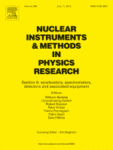 Ultra-traces of 226Ra in nylon used in the Borexino solar neutrino experiment
Ultra-traces of 226Ra in nylon used in the Borexino solar neutrino experiment
G. Zuzel, M. Wójcik, C. Buck, W. Rau, G. Heusser.
Nuclear Instruments and Methods in Physics Research A
Volume 498, Issues 1–3, Pages 240-255 (2003)
Abstract
Borexino is a large-scale liquid scintillator detector for solar neutrinos with a low expected event rate, therefore requiring an extremely low radioactive background. In this paper we present a method, which makes it possible to measure the surface and bulk activities of 226Ra in thin nylon foils for use in Borexino at unprecedented concentration levels, as low as 0.5 μBq/m2 and 10 μBq/kg, respectively. It is based on high-sensitivity 222Rn emanation detection, taking advantage of the fact that the permeability of nylon for radon is strongly enhanced in the presence of water. A mathematical diffusion model is outlined to distinguish the surface and bulk activity of 226Ra from the 222Rn emanation rates of dry and wet film. The experimental method is described in connection with screening measurements of nylon foils of different origin. One foil could be identified with a low 226Ra contamination (corresponding to ∼10−12 g/g 238U-equivalent) for application in Borexino. This film will be used for the construction of a liquid scintillator containment vessel as the central part of the Borexino solar neutrino detector.